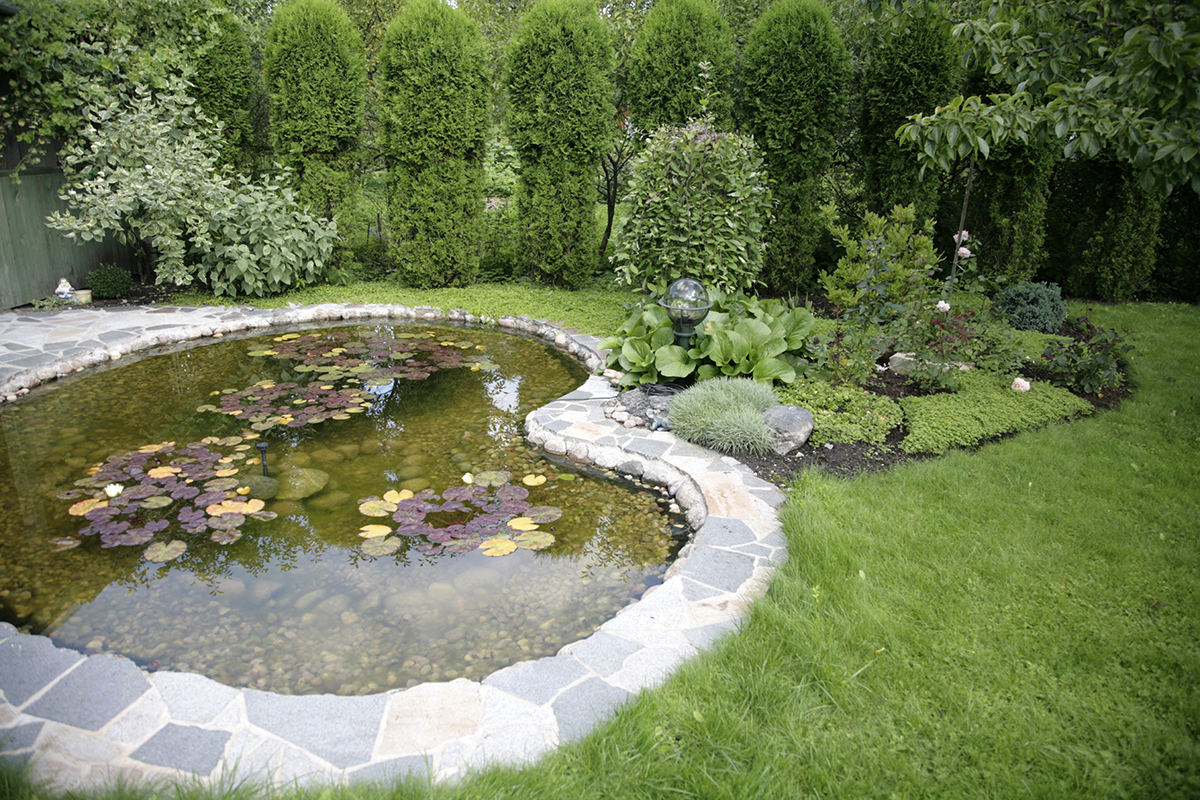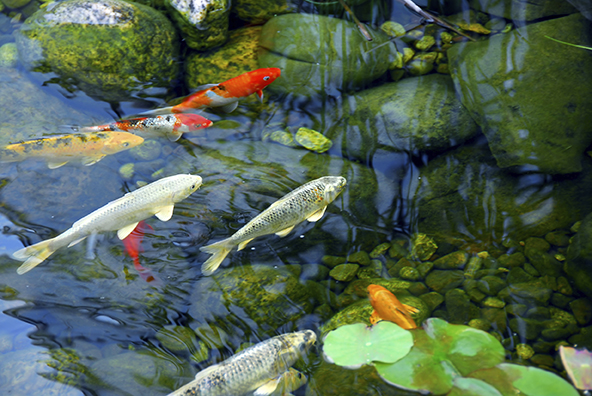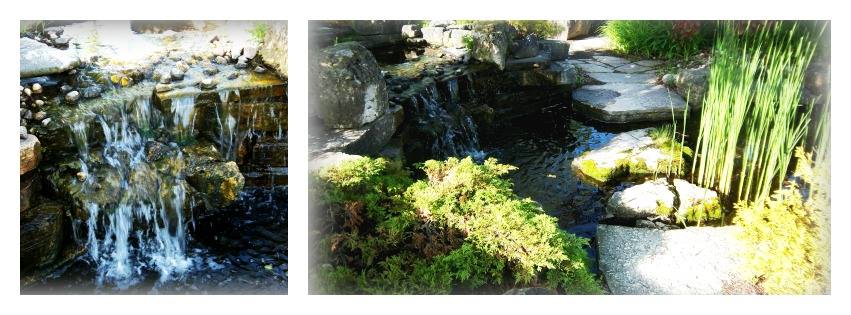The Right Way to Close Your Backyard Pond for Fall & Winter
Earlier in 2016, Grand River Natural Stone published a blog on the right way to open your backyard pond for spring.
This is the companion piece: making sure it’s safely and properly shut down before the cold weather arrives.
FALL PREPARATION
Even though you may want to keep your pond running into autumn, it’s a good time to clean it out before the temperatures drop to 10˚C (50˚F) because:
- Any fish in your pond are still active enough to be strong swimmers. The chances of them getting injured as you clean around them are low.
- It’s a lot easier to clean pond water when it isn’t partially frozen and/or full of heavy seasonal debris (like fallen leaves or stray mulch).
Start by cleaning the water’s surface by scooping up leaves with a net (make sure to avoid picking up any fish).
Pump out a little bit of water
Once you’ve cleaned the surface water, remove a little bit of water from your pond.
This will make it easier to hand scoop any topsoil or other gunk that’s stuck to the wall lining of your pond (including any edges, shelves or irregularly-shaped areas).
Any debris you can’t reach with your hands, blast off using a hose.
It’ll end up back on the water’s surface (which you can scoop away again with your net).
At the same time, you’ll also replenish the water you just pumped out.
Plant care
Pond plants are nice to look at and are beneficial to your fish.
They’re also a significant source of fall debris.
As your plants begin to die off:

pond with water-lilys – beautiful element landscape
- Prune away dead stems to prevent water decay
- Take non-hardy plants (like tropical lilies or water hyacinths) indoors for the winter
- Hardy plants (like water lilies) can be moved to the deep end of your pond
- Any bog plants you have can be covered with straw or other insulating aggregates
Cover your pond
Once the pond is clean, install a pond net to rest above it; like a hammock tied between two trees.
A pond net will catch any leaves, branches or other debris and keep it from falling into your pond.
Here are some things to keep in mind as you secure your pond net:
- Suspend it at least 18” from the water surface of your pond
- Tie the edges of the net tight to make sure debris doesn’t slip through them
Lastly, be certain to check your net regularly to ensure it doesn’t sag into the water.
If it does, it can be dangerous to your fish and provide a spot for leaves and junk to collect and get caught in.
CLOSING FOR WINTER
Shutting down your pond for the winter is all about:
- The pump
- The filter
- The UV clarifier
If you recall, winter 2015 started out very mild. In fact, the first real significant snowfall didn’t even occur until the end of January 2016.
There’s no guarantee that won’t happen again.
Turning off the pump
Some people, even in the middle of winter, like to keep their pump running because it creates warm water at the bottom of the pond.
That’s where your fish will hang out in the winter. So it’s a perfect environment for them to be comfortable.
Of course, you can also turn off the pumps and filter for the winter.
If you do, it won’t harm the fish because:
- Cold water has more oxygen than warm water
- Fish tend to breathe slower in winter (they use less oxygen)
- Bacteria won’t grow in winter (so you don’t need the filter to clean it away)
Drain everything
Should you decide to turn off the filter for winter, make sure to completely drain all your pond pump accessories:
- Plumbing pipes
- External pumps
- UV supplies
If you’re storing your supplies in an unheated area (like a garage or shed), double check that every last drop of water has been drained out.
Otherwise, water drops can freeze into ice drops.
As a result, your piping items can crack and break over the season.
Your best bet is to store any equipment you have indoors in a warm and dry location.
Winter fish care
It may sound cruel, but leaving fish (especially koi) in your pond during the winter is actually

Koi fish in a natural stone pond
good for them if:
- Your pond is at least 18” deep
- It has little to no water circulation
Delicate fish like goldfish, bubble-eyed fish or lionheads should come inside for winter, though.
Remember, warm water tends to sink to the bottom of your pond. In winter, that’s where your fish will be anyway.
They won’t hang out by the surface, so there’s little chance of them becoming frozen or too cold.
One last thing: once the temperature gets below 4˚C (39˚F), you can actually stop feeding your koi fish.
Don’t worry: they won’t starve. They have enough stored energy to sustain them during the winter.
Come to us for all your needs
Whatever you need to close your pond for fall and winter, we’ve got the experience and products to make sure it’s done safely.
Contact us with your questions or ask for a FREE quote on any of our products.

